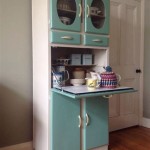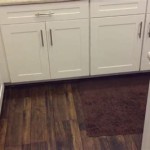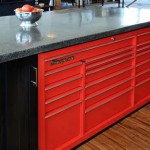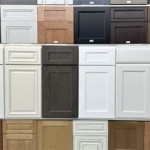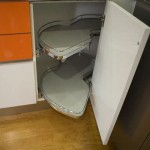Should You Paint Kitchen Cabinets the Same Color as Walls?
The question of whether to paint kitchen cabinets the same color as the walls is a common design dilemma. This approach can create a seamless, unified look, but it also presents potential drawbacks. Understanding the advantages and disadvantages of this design choice is crucial for making an informed decision tailored to individual kitchen spaces and aesthetic preferences.
One of the primary advantages of a monochromatic color scheme in the kitchen is the illusion of spaciousness it can create. By minimizing visual breaks between the walls and cabinets, the eye perceives a larger, more open area. This is particularly beneficial in smaller kitchens where maximizing perceived space is a priority. The cohesive color scheme can also create a sense of calm and tranquility, fostering a relaxing atmosphere conducive to cooking and socializing.
A monochromatic palette simplifies the design process. Selecting a single color for both walls and cabinets eliminates the need to coordinate multiple shades and undertones. This streamlined approach can save time and effort, making the design process less daunting, especially for those less experienced with interior design principles. This simplicity can also translate to cost savings, as fewer paint samples and consultations may be required.
This approach offers significant flexibility in showcasing other design elements. With a neutral backdrop established by the consistent wall and cabinet color, bolder accents and textures can take center stage. Artwork, colorful backsplashes, patterned rugs, and decorative hardware can add visual interest without overwhelming the space. This allows for greater freedom in expressing personal style and creating a unique kitchen aesthetic.
However, painting kitchen cabinets the same color as the walls also presents potential challenges. One key consideration is the risk of creating a monotonous look. Without sufficient contrast, the kitchen can appear bland and lack visual depth. Careful consideration of the chosen color, its saturation, and the introduction of contrasting textures and materials is essential to prevent a flat, uninspiring space.
Lighting plays a critical role in the success of a monochromatic kitchen. Insufficient or poorly placed lighting can exacerbate the potential for a dull and lifeless appearance. Careful planning of both natural and artificial lighting is crucial to highlight the subtle nuances of the chosen color and prevent the space from feeling cavernous or gloomy. Layered lighting, incorporating ambient, task, and accent lighting, can create depth and visual interest.
Maintaining a monochromatic kitchen requires diligent cleaning practices. Any marks, smudges, or stains on either the walls or cabinets will be more noticeable against a uniform backdrop. Selecting a durable, easy-to-clean paint finish is essential for minimizing the visibility of everyday wear and tear. Regular cleaning and prompt attention to spills and splatters are also necessary to maintain a pristine appearance.
The specific color chosen significantly impacts the overall effect. Lighter shades, such as whites, creams, and pastels, can enhance the sense of spaciousness and airiness. However, these lighter hues can also show dirt and imperfections more readily. Darker shades, such as deep blues, greens, or grays, can create a dramatic and sophisticated atmosphere, but they can also make the space feel smaller if not balanced with adequate lighting and contrasting elements.
The size and layout of the kitchen also influence the suitability of a monochromatic scheme. In larger kitchens, a single color can create a sense of cohesion and flow. In smaller kitchens, this approach can maximize perceived space but requires careful consideration of lighting and contrasting textures to prevent a closed-in feeling. The presence of natural light, the height of the ceilings, and the overall layout all contribute to the success of this design choice.
The existing architectural features of the kitchen should also be taken into account. Intricate moldings, decorative trim, or unique architectural details can be lost against a monochromatic backdrop. If these features are desired focal points, introducing contrasting colors or highlighting them with accent lighting may be necessary. Alternatively, embracing the seamless look by painting these details the same color can create a sleek, minimalist aesthetic.
Ultimately, the decision of whether to paint kitchen cabinets the same color as the walls depends on a variety of factors, including personal preference, the size and layout of the kitchen, the desired atmosphere, and the willingness to address the potential challenges. Careful consideration of these factors, along with thoughtful planning and execution, can result in a stylish and cohesive kitchen space.

Can You Paint Your Cabinets The Same Colour As Walls Maria Killam True Expert Kitchen Inspirations All White Home Kitchens

Choosing The Perfect Kitchen Cabinet Color To Match Your Walls Plank And Pillow

Can You Paint Your Cabinets The Same Colour As Walls

Should Your Kitchen Cabinets And Walls Be The Same Color

How To Choose The Best White Paint Color Cabinets Trims Or Walls Kylie M Interiors

Painted Kitchen Cabinet Ideas Architectural Digest

Can You Paint Kitchen Cabinets Two Colors In A Small The Decorologist

Should White Cabinets Match Walls

Should White Cabinets Match Walls

Painting Crown Molding To Match Cabinets Is It A Good Idea
Related Posts

